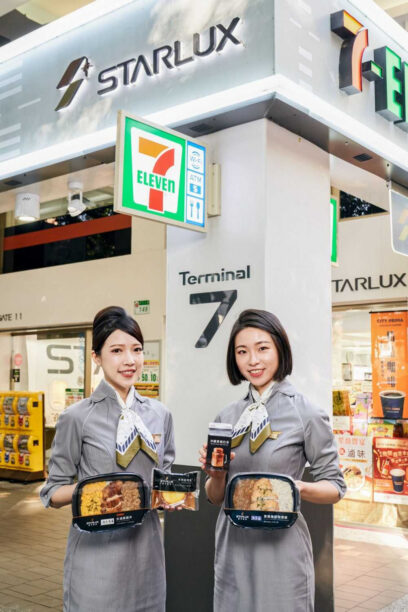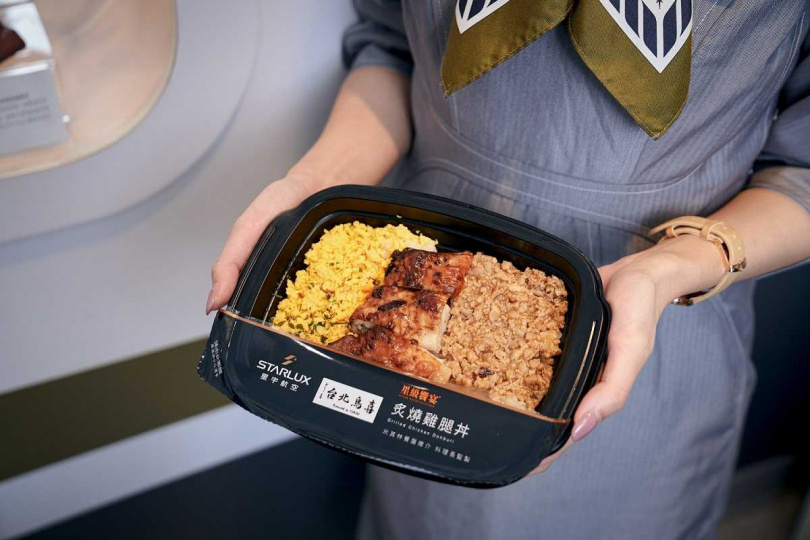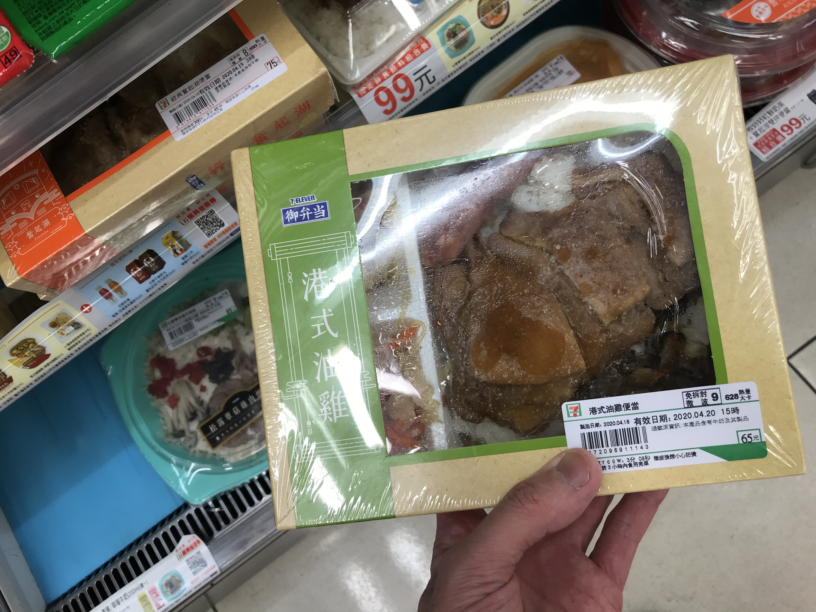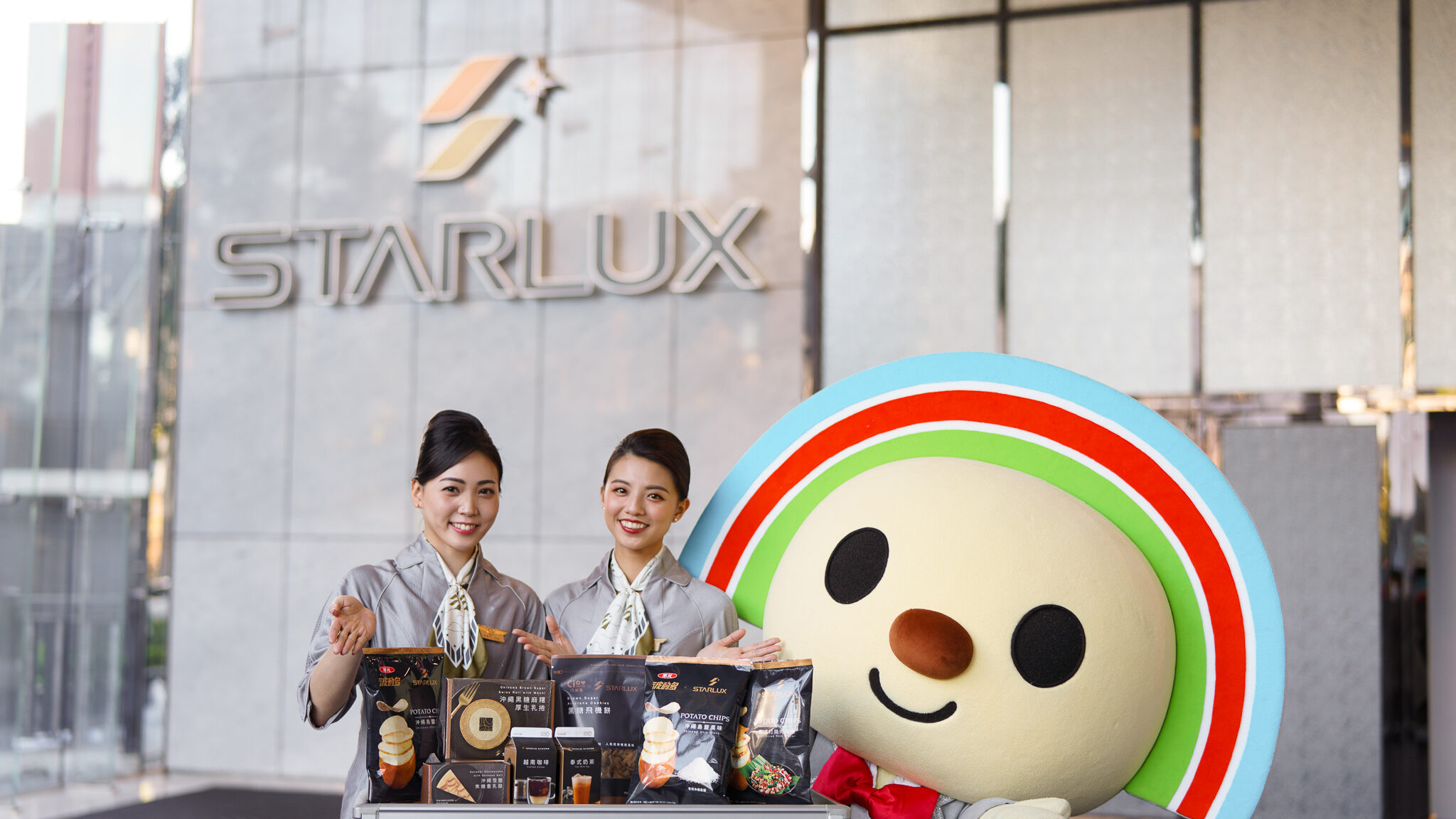Not too long ago the convenience store FamilyMart did a cross-promotion with Din Tai Fung, the iconic Taiwanese soup dumpling place with 170 locations around the world. Din Tai Fung is seen as an institution; even if it’s more tourist fare than what Taiwanese themselves would eat regularly, why work with FamilyMart, a 7/11-type chain? Wouldn’t this diminish the Din Tai Fung brand somehow?


I tried the stuff, and wasn’t terribly impressed. The flavors were definitely a bit more subtle than regular FamilyMart microwave food, much as the most expensive instant noodles tend to have a bit more nuanced flavors than ordinary brands. But it wasn’t so much better than regular microwaveable food as to warrant the higher price.
7/11 did a promotion recently with STARLUX, the new luxury airline launched by one of the Chang brothers–the family that runs EVA Air, one of Taiwan’s two biggest airlines. Speculation is that an inheritance-related family split resulted in Chang Kuo-wei–nicknamed the “Hamlet” of the Chang aviation dynasty–start his own breakaway airline, touted as a luxury carrier a step above the common plebes. Hamlet’s personalized 7/11 microwaveable meals, then, as it were.

STARLUX was launched during the COVID-19 pandemic, when there wasn’t exactly much travel happening. Maybe it seemed logical to promote the new airline by partnering with 7/11 to offer a sample of its microwaveable airplane food…??? If STARLUX wanted to brand itself as a luxury air carrier, why partner with a convenience store chain to offer cheap microwaveable instant fare? But I saw 7/11s decked out in STARLUX finery, anyway.

It made about as much sense to me as the flights to nowhere offered by Starlux during COVID, at least one of which was piloted by K.W. Chang himself; the planes simply went up into the skies, flew over some completely inaccessible destination like Japan or South Korea–and then turned around, after offering passengers a bit of duty-free shopping and Michelin-starred cuisine. Never mind the carbon emissions that this stunt would generate. I guess we all went a bit crazy during those years.
7/11 microwaveable food, which is delicious, is basically airplane food, so I’ve always wondered why airplane food tends to be so bad. The existence of Taiwanese microwaveable instant food should set a baseline for airplane food, but somehow airplane food is significantly worse.

Rising inflation, spurred by Russia’s invasion of Ukraine and a host of other global events, has caused food prices to rise in Taiwan; egg prices, for example, have rocketed as a result of the recent flare-up of avian flu.
One wonders if prices will ever come down. My usual go-to 7/11 biandang lunchbox–like the Taiwanese equivalent of bento–has shot up to something like 89 NT from 65 NT. 7/11 is disguising the price hike as an upgrade, touting the new, higher-priced (and nearly identical) lunchbox as “deluxe”.

Salaries are low in Taiwan, so panic sets in whenever prices rise. This has led to hoarding behavior and panic buying for goods ranging from toilet paper to panadol, massive numbers of people signing up for limited-time mobile plans, and even people changing their names to get free sushi. When major chains—such as Bafang Yunji, the pot sticker chain, or Formosa Chang, which offers traditional Taiwanese fare—hike their prices, it’s taken as an index for society as a whole. And then there are traditional stores that adamantly refuse to raise their prices—sometimes for decades—gaining fame and popularity through that. Jin Feng, near the Chiang Kai-Shek Memorial, might be my favorite of these kinds of restaurants.
Yet what is most amazing of all is the gratuitous invention of “new” products at 7/11 and other convenience stores, whether through a combination of existing ingredients, or by making some products seasonal.
7/11 for example offers not one but three kinds of hot dogs; one type comes in most stores ready to eat, on heated rollers, and two others are microwaveable. One hot dog is offered in the bread aisle, and another is in the refrigerator—the hot dog in the bread aisle being seasonal, and the rarest, as well as probably the best-tasting. (To document this hot-dog strategy, I once took photos of all three varieties in a 7/11 store. In response, the clerk flipped out, pretended to call the police on me as I watched quizzically, and then physically tried to block me from leaving the store–but that is another story. I have had to watch out for that clerk in the neighborhood ever since).
One might also see “new” products—combining, say, the sauce for 7/11’s Italian pasta with a different type of noodle, or putting braised meat originally offered in lunchboxes on various kinds of noodles instead.
I don’t know how many source ingredients there are, but somewhere I like to imagine a giant factory full of various tubes, where they just mix and match different combinations into the containers on demand.
But all the while, there’s us just eating various permutations of the same gargantuan amount of food products. Though our idea of what makes a good meal might come from a sense of perceived uniqueness—such as if it is handmade, a new recipe, or made from rare ingredients—at the end of the day, it’s all just a combination of things, made, packaged, and marketed for us to eat.






